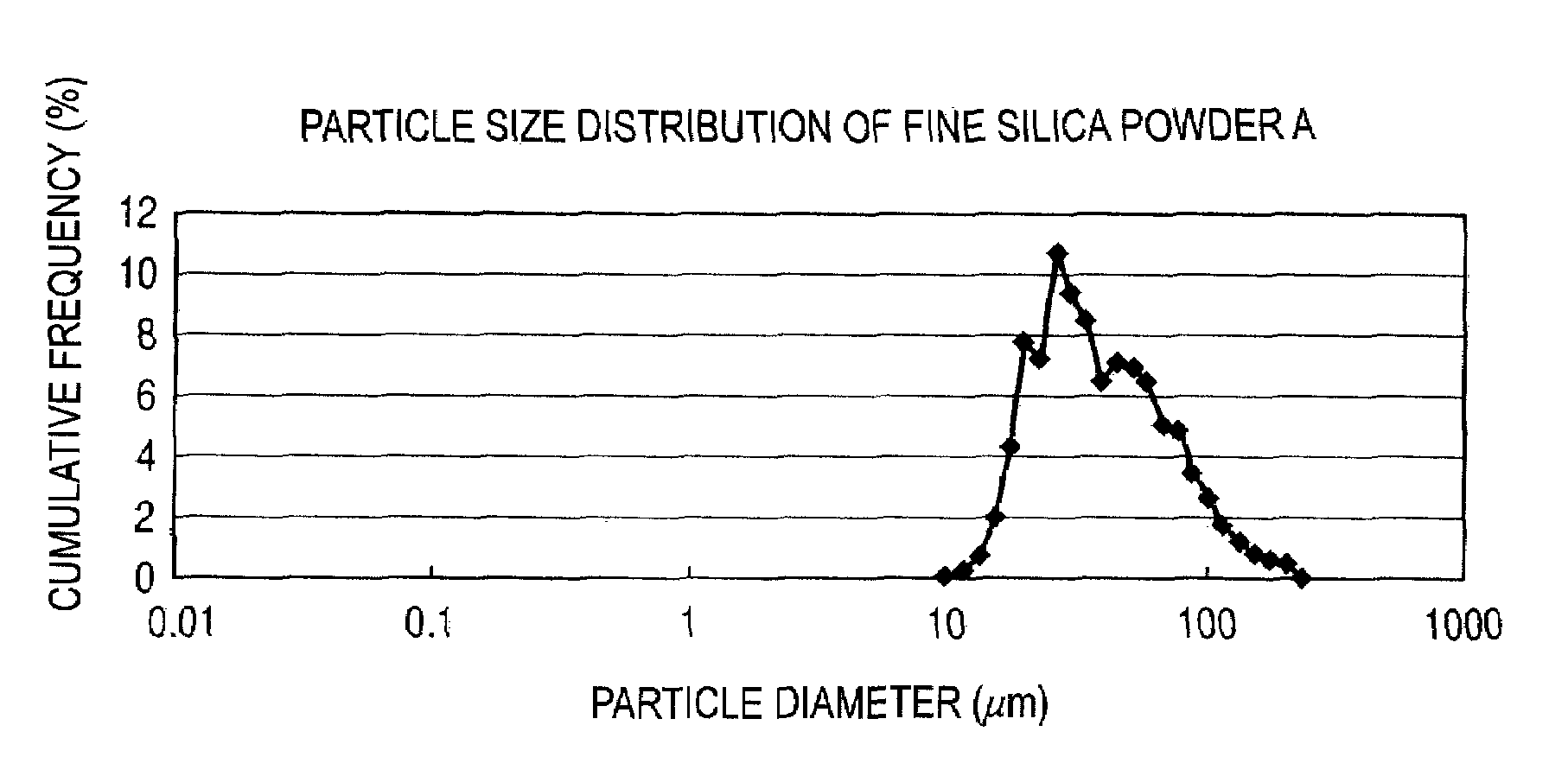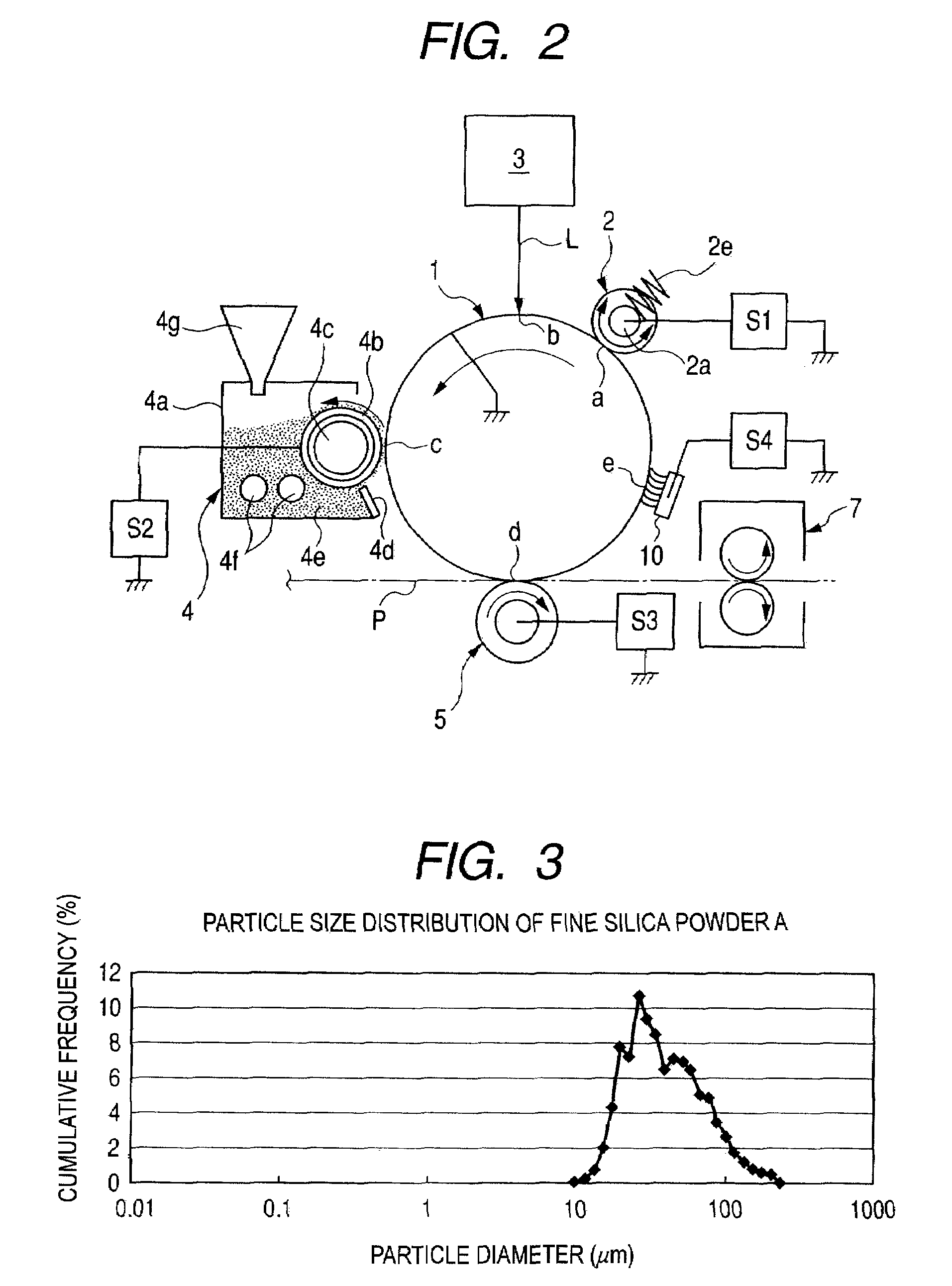Toner and image forming method
a technology of toner and image, applied in the field of toner, can solve the problems of lowering the charge quantity, unable to obtain stable images, and line marks (development line marks), and achieve the effects of stable image density stability and image quality
- Summary
- Abstract
- Description
- Claims
- Application Information
AI Technical Summary
Benefits of technology
Problems solved by technology
Method used
Image
Examples
example 1
[0220]An aqueous dispersion medium and a polymerizable monomer composition were each prepared in the following way.
[0221]Preparation of Aqueous Dispersion Medium:
[0222]In 292 parts by mass of ion-exchanged water, 47 parts by mass of an aqueous 0.1 mol / liter Na3PO4 solution was introduced, followed by heating to 60° C. and thereafter stirring at 13,000 rpm by using a TK-type homomixer (manufactured by Tokushu Kika Kogyo Co., Ltd.). To the resultant mixture, 68.5 parts by mass of an aqueous 1.0 mol / liter CaCl2 solution was slowly added to obtain an aqueous medium of pH 6 containing a calcium phosphate compound.
[0223]Preparation of Polymerizable Monomer Composition:
[0224]
Styrene83parts by massn-Butyl acrylate17parts by massColorant (C.I. Pigment Blue 15:3)5parts by massCharge control agent1part by mass(3,5-di-t-butylsalicylic acid metal compound)Saturated polyester resin obtained by4parts by masscondensation polymerization of propylene oxideand ethylene oxide addition products of bisph...
examples 2 to 4
[0241]Toners 2 to 4 were obtained in the same manner as in Example 1 except that the fine silica powder was changed for the fine silica powders B to D, respectively. Evaluation was also made in the same way as in Example 1 to obtain the results shown in Table 3.
examples 5 to 7
[0243]Toners 6 to 8 were obtained in the same manner as in Example 1 except that the fine silica powder was changed for the fine silica powders F to H, respectively. Evaluation was also made in the same way as in Example 1 to obtain the results shown in Table 3.
PUM
| Property | Measurement | Unit |
|---|---|---|
| weight average particle diameter | aaaaa | aaaaa |
| laser diffraction particle size distribution meter | aaaaa | aaaaa |
| BET specific surface area | aaaaa | aaaaa |
Abstract
Description
Claims
Application Information
 Login to View More
Login to View More - R&D
- Intellectual Property
- Life Sciences
- Materials
- Tech Scout
- Unparalleled Data Quality
- Higher Quality Content
- 60% Fewer Hallucinations
Browse by: Latest US Patents, China's latest patents, Technical Efficacy Thesaurus, Application Domain, Technology Topic, Popular Technical Reports.
© 2025 PatSnap. All rights reserved.Legal|Privacy policy|Modern Slavery Act Transparency Statement|Sitemap|About US| Contact US: help@patsnap.com



